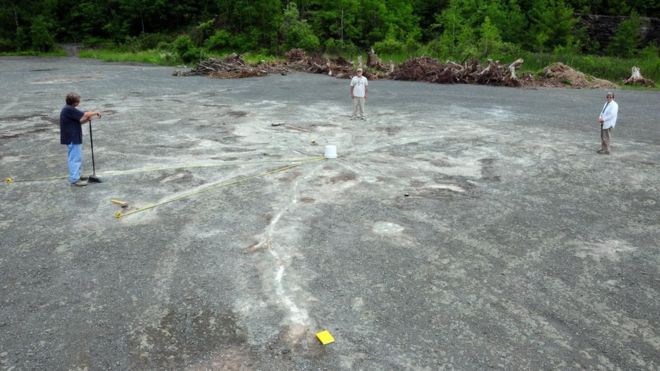At https://phys.org/news/2019-12-fossil-shells-reveal-global-mercury.html … concerns fossil oyster shells found in Alabama (along the Tombigbee River) among other diverse locations. They date back 66 to 72 million years ago – on the cusp of the K/T boundary event (but dated a few million years earlier). We are, it seems, back to that hoary old chestnut, a geochronological failure in managing end of Cretaceous sediments with the Chicxulub crater (and the thin line of iridium which is used as a marker point amid a sea of sedimentation layering). Now, as reported on several occasions, the massive outpouring of lava from the earth at what is known as the Deccan Traps in India, is geologically differentiated from the actual impact event as it spans a considerable amount of sedimentation. It is thought to have started earlier than the asteroid (or comet) strike and to have gone on for thousands and millions of years. This by itself should cause a bit of head scratching but those abiding strictly to the uniformitarian agenda (time scale of the event) do not seem to vary from the song sheet. In this particular study fossil marine shells from around the world seem to possess a clear mercury signal (described as contamination) contemporary with the Deccan Traps. Researchers say they have found a global signal of ocean warming and elevated mercury concentrations, the thinking being that volcanism on the scale of the Traps must have warmed the oceans (and the earth), thereby impacting on oysters on a global distribution scale, and volcanism is blamed for the heightened mercury levels. They are said to date just prior to the impact event and were contemporary with a surge in tectonic and volcanism in India. They found mercury levels in Cretaceous shells were much higher than found in modern equivalent shells.
 … they used shells collected from Australia, Alaska, California and Washington State, as well as Alabama, Argentina, India, Egypt, Libya and Sweden. They analysed the isotopic composition of the shell carbonite to determine marine temperatures – as well as the amount of mercury taken up by those shells. A lot of genuine research is involved in the study – and somewhat meticulous cataloguing of the data. It is well presented but appears to fully take onboard the mainstream geological time scale of gradualism. Catastrophism appears to be non-existent – but we are dealing with a catastrophic event (the asteroid or comet strike at Chicxulub). One might imagine rapidly laid sediments – but these are apparently absent from the favoured interpretation. Remarkable. One could have developed a parallel interpretation and laid them side by side to compare the results. Let others decide.
… they used shells collected from Australia, Alaska, California and Washington State, as well as Alabama, Argentina, India, Egypt, Libya and Sweden. They analysed the isotopic composition of the shell carbonite to determine marine temperatures – as well as the amount of mercury taken up by those shells. A lot of genuine research is involved in the study – and somewhat meticulous cataloguing of the data. It is well presented but appears to fully take onboard the mainstream geological time scale of gradualism. Catastrophism appears to be non-existent – but we are dealing with a catastrophic event (the asteroid or comet strike at Chicxulub). One might imagine rapidly laid sediments – but these are apparently absent from the favoured interpretation. Remarkable. One could have developed a parallel interpretation and laid them side by side to compare the results. Let others decide.
Over at www.bbc.co.uk/news/science-environment-50840134 … we have the world's oldest (known) fossil tree, unearthed in New York State – in the foothills of the Catskill Mountains (a vacation and weekender location). The link was provided by Gary. Nice place to do a bit of field research as the site lies in the Hudson River valley. We are told that over the last ten years some 3000 sq miles of ancient forest has been mapped. The forest itself goes back some 386 million years ago and is thought to have once stretched beyond Pennsylvania …

 … it is thought the forest was wiped out by a flood of some description, washing away the trees but leaving behind their root systems. The site is a quarry and fish fossils have been found there.
… it is thought the forest was wiped out by a flood of some description, washing away the trees but leaving behind their root systems. The site is a quarry and fish fossils have been found there.
